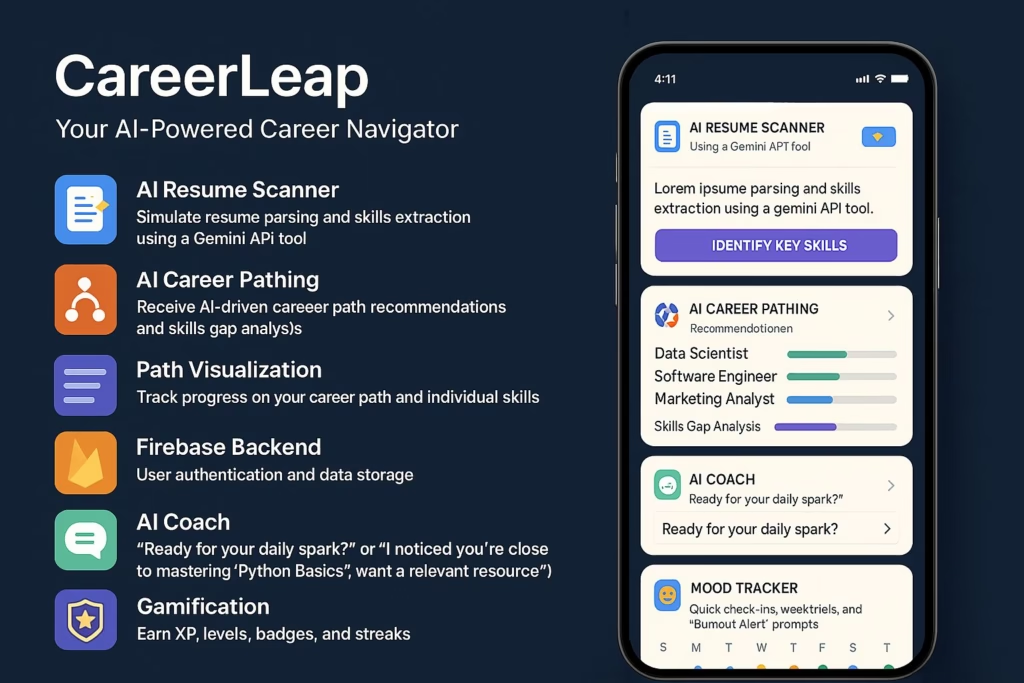More Than Just Free Food: A Deep Dive into Google’s Legendary Employee Perks

When the topic of workplace culture and employee benefits arises, one company consistently dominates the conversation: Google. Renowned for its innovative spirit and progressive approach to employment, Google has cultivated an image synonymous with unparalleled employee perks. The anecdotes are legendary – gourmet cafeterias serving free meals, on-site massages, nap pods, fitness centers, and even playful office environments designed to spark creativity. While these iconic benefits are a significant part of the Google experience, focusing solely on them misses the broader, more strategic picture. Google’s approach to employee benefits is a meticulously crafted ecosystem designed not just for comfort, but for fostering innovation, ensuring long-term employee well-being, promoting productivity, and ultimately, attracting and retaining the brightest minds in a fiercely competitive industry. This deep dive explores the comprehensive spectrum of Google’s legendary employee perks, going far beyond the famous free food to understand the philosophy and impact of their holistic approach to human capital.

I. The Foundation: Health, Wellness, and Mental Health Support
At the core of any robust benefits package is a commitment to employee health. Google takes this principle to an exceptional level, viewing healthcare not merely as a provision but as a strategic investment in its workforce’s overall well-being and resilience. This commitment manifests in several key areas:
- Comprehensive Medical, Dental, and Vision Coverage: Google offers extensive health insurance plans covering medical, dental, and vision needs for employees and their families. These plans often feature low deductibles, broad networks of providers, and coverage for a wide range of services, including preventative care, specialist visits, and prescription drugs. The focus is on ensuring employees have access to quality care without prohibitive costs, reducing financial stress related to health issues.
- Robust Mental Health Support: Recognizing the increasing importance of mental well-being, Google provides substantial resources. This includes access to confidential counseling services, therapy sessions (often with a significant number of free visits), mental health apps, workshops on stress management and mindfulness, and employee assistance programs (EAPs). The company actively works to destigmatize mental health issues, encouraging employees to seek support when needed. This proactive stance on mental health is crucial for maintaining a productive and engaged workforce.
- Wellness Programs and Fitness Initiatives: Google campuses are famously equipped with state-of-the-art fitness centers, often offering classes, personal training, and specialized facilities like swimming pools or climbing walls. Beyond on-site amenities, the company often provides stipends or discounts for gym memberships, fitness classes, and wellness activities outside of work. Programs focused on nutrition, sleep hygiene, and stress reduction are also common, promoting a holistic approach to health that extends beyond physical fitness.
- Preventative Care and Health Screenings: Emphasis is placed on preventing illness rather than just treating it. This includes covering preventative screenings, annual check-ups, and providing resources for managing chronic conditions. Health advocates and wellness coaches may also be available to guide employees towards healthier lifestyle choices.
These health and wellness benefits underscore Google’s understanding that a healthy employee is a more productive, creative, and loyal employee. It’s a fundamental pillar supporting the company’s high-performance culture. For businesses looking to benchmark their own offerings, understanding the depth of Google’s health investment is key to designing competitive HR strategies.
II. Financial Security and Long-Term Growth
Beyond immediate health needs, Google invests in its employees’ long-term financial security and wealth creation, recognizing that financial stability contributes significantly to overall peace of mind and job satisfaction. Key components include:
- Generous Retirement Savings Plans: Google typically offers attractive 401(k) plans (or equivalent retirement savings vehicles depending on location) with substantial company matching contributions. This encourages employees to save for retirement and provides a significant financial boost towards their long-term goals.
- Stock Options and Restricted Stock Units (RSUs): As a publicly traded company, Google provides employees with opportunities to share in its financial success through stock grants (RSUs) and potentially Employee Stock Purchase Plans (ESPPs). This aligns employee interests with the company’s performance, fostering a sense of ownership and shared mission. This benefit is particularly attractive in the tech industry, where equity participation is a major draw.
- Financial Planning Resources: Google often provides access to financial advisors, workshops on budgeting, investing, and retirement planning. This educational support empowers employees to make informed decisions about their finances, managing debt, saving effectively, and planning for the future.
- Life and Disability Insurance: Comprehensive life insurance and short-term/long-term disability insurance policies are typically provided, offering crucial financial protection for employees and their families in unforeseen circumstances.
- Commuter Benefits and Reimbursements: Many Google employees receive benefits related to commuting, such as subsidies for public transport, parking assistance, or shuttle services, easing the financial burden of daily travel to work.
By addressing financial well-being proactively, Google helps mitigate a common source of employee stress, allowing individuals to focus more intently on their work and personal growth. This focus on financial health is a critical element in understanding the total rewards package offered by leading tech firms and is essential for effective recruitment process outsourcing.
III. Time Off, Flexibility, and Work-Life Integration
Google understands that peak performance requires adequate rest and personal time. Their policies on time off and flexibility are designed to support a healthy work-life balance, enabling employees to recharge, attend to personal matters, and pursue interests outside of work. This philosophy is reflected in:
- Generous Paid Time Off (PTO): Employees typically accrue generous amounts of PTO, which can be used for vacations, personal appointments, or illness. The accrual rates often increase with tenure, rewarding loyalty.
- Paid Holidays: Google observes standard public holidays and may offer additional floating holidays, allowing employees flexibility in celebrating personal or cultural holidays.
- Extensive Parental Leave: Google is known for its industry-leading parental leave policies, offering significant paid time off for both birthing and non-birthing parents. This support helps employees manage the transition to parenthood without compromising their career or financial stability, promoting gender equity in caregiving responsibilities.
- Sabbaticals and Personal Leave: Depending on tenure and specific roles, opportunities for extended leave or sabbaticals may be available, allowing employees extended breaks for travel, personal projects, or rejuvenation.
- Flexible Work Arrangements: While Google has historically emphasized in-office collaboration, it also offers varying degrees of flexibility, including hybrid work models and, in some cases, remote work options. The company supports arrangements that allow employees to balance work responsibilities with personal life demands, acknowledging that flexibility can boost productivity and morale.
This robust approach to time off and flexibility acknowledges that employees are multifaceted individuals with lives and responsibilities outside the workplace. It’s a strategy that pays dividends in reduced burnout, increased loyalty, and sustained productivity, critical factors in understanding current HR trends.
IV. Continuous Learning and Career Development
Google’s commitment to its employees extends to their professional growth and career trajectory. The company fosters a culture of continuous learning, providing ample opportunities for skill development, knowledge acquisition, and career advancement within the organization.
- Internal Training and Development Programs: Google offers a vast array of internal training sessions, workshops, and online courses covering technical skills, leadership development, project management, communication, and more. Platforms like Grow with Google and internal learning portals provide resources tailored to employee needs and career aspirations.
- Tuition Reimbursement and Educational Assistance: Employees often have access to tuition reimbursement programs, allowing them to pursue external degrees, certifications, or courses relevant to their career development at Google. This investment supports employees in acquiring new competencies and staying current in rapidly evolving fields.
- Career Pathing and Internal Mobility: Google encourages internal mobility, making it easier for employees to explore different roles and career paths within the company. Mentorship programs and career counseling resources help employees navigate their professional journey and identify opportunities for growth.
- Access to Leading Research and Conferences: Employees may be supported in attending industry conferences, workshops, and accessing cutting-edge research, ensuring they remain at the forefront of technological and professional advancements.
- Google Career Certificates: The company offers professional certificates in high-demand fields like IT Support, Data Analytics, Project Management, and UX Design, often accessible to employees and the public, demonstrating a commitment to workforce development at large.
By investing heavily in employee development, Google not only enhances its internal talent pool but also reinforces its reputation as an employer that values growth, innovation, and long-term career commitment. This focus is vital for retaining talent in the competitive tech landscape and is a key differentiator in employer branding.
V. Lifestyle Perks and On-Site Amenities: Creating a Supportive Ecosystem
The famous perks – the food, the gyms, the games – are part of a larger strategy to create an environment where employees can seamlessly integrate their work and personal lives, minimize daily friction, and feel valued. These lifestyle benefits include:
- World-Class Cafeterias and Micro-Kitchens: The free, high-quality meals are perhaps Google’s most famous perk. Cafeterias offer diverse, healthy options, catering to various dietary needs. Micro-kitchens stocked with snacks, drinks, and coffee are available throughout the offices, ensuring employees have easy access to refreshments throughout the day.
- On-Site Services: Many Google campuses offer a range of convenient on-site services, such as dry cleaning, car washes, banking facilities, barbershops, and wellness clinics. These amenities save employees time and effort, simplifying their daily routines.
- Childcare Support: Google has historically offered various forms of childcare support, ranging from on-site childcare centers (though availability varies) to subsidies or backup care options, acknowledging the challenges working parents face.
- Transportation Assistance: Company-provided shuttles, public transport subsidies, and EV charging stations help employees commute efficiently and sustainably.
- Pet-Friendly Policies: Many Google offices welcome employees’ dogs, contributing to a more relaxed and friendly atmosphere.
- Volunteer Time Off (VTO): Google often encourages community involvement by providing paid time off for employees to volunteer with charitable organizations, aligning personal values with corporate social responsibility.
- Recreational Facilities and Activities: Beyond gyms, offices often include game rooms, lounges, libraries, and spaces for informal gatherings, promoting social interaction and relaxation.
These perks collectively contribute to a unique corporate culture that aims to make the workplace a highly desirable and supportive environment. They are designed to reduce distractions, enhance convenience, and foster a sense of community and belonging among employees. This holistic approach is central to Google’s success in talent acquisition and retention, making it a benchmark for comprehensive employee perks.
VI. The Underlying Philosophy: Why Invest So Heavily?
Google’s extensive benefits package isn’t merely about generosity; it’s rooted in a strategic understanding of human capital and organizational success. Several core philosophies drive this investment:
- Attracting Top Talent: In the highly competitive tech sector, exceptional benefits are crucial for attracting the best engineers, designers, marketers, and other professionals. Google’s reputation for outstanding perks serves as a powerful magnet for talent worldwide.
- Retaining High Performers: Beyond acquisition, these benefits foster loyalty and reduce turnover. When employees feel valued, supported, and well-compensated (both financially and non-financially), they are more likely to stay with the company long-term.
- Boosting Productivity and Innovation: By removing daily stressors (like commuting costs, meal planning, or gym memberships) and promoting well-being, Google enables employees to focus more effectively on their work. A comfortable, stimulating, and supportive environment is also believed to enhance creativity and collaboration, driving innovation.
- Cultivating a Strong Company Culture: The perks help shape Google’s unique culture – one that emphasizes collaboration, learning, employee well-being, and a sense of fun. This culture becomes a key part of the employer brand and employee experience.
- Employee Advocacy: Happy, well-supported employees often become brand ambassadors, recommending Google as a place to work and enhancing its external reputation.
Essentially, Google views its employees as its most valuable asset and invests accordingly, understanding that supporting their holistic needs translates directly into business success. This perspective is fundamental for any organization aiming to build a sustainable competitive advantage.

VII. Impact on Recruitment and Retention in the Tech Industry
Google’s comprehensive benefits package has set a high bar for the entire tech industry. Companies worldwide often benchmark their own offerings against Google’s, leading to a broader trend of enhanced employee benefits across the sector. This has several implications:
- Elevated Expectations: Prospective employees now often expect a certain level of perks and benefits, especially in high-demand fields like technology. Companies that cannot compete may struggle to attract top talent.
- Competitive Differentiation: While many companies offer similar benefits, Google’s scale, integration, and long-standing reputation make its package particularly compelling. Companies must find unique ways to differentiate their offerings, perhaps focusing on specific niches or employee needs.
- Retention Strategy: A strong benefits package is a powerful retention tool. Employees are less likely to leave jobs that offer significant financial, health, and lifestyle advantages, reducing costly turnover and maintaining institutional knowledge.
- Focus on Total Rewards: The emphasis shifts from just salary to the total rewards package, including benefits, career development, work environment, and company culture. This holistic view is essential for modern HR and recruitment professionals.
For HR professionals and recruiters, understanding these dynamics is crucial for crafting effective talent acquisition and retention strategies. Offering competitive benefits is no longer optional; it’s a strategic imperative.
VIII. Challenges and Considerations
Despite the allure, Google’s extensive perks model isn’t without its challenges and considerations:
- Sustainability and Scalability: As companies grow and economic conditions change, maintaining such a comprehensive and costly benefits package can become challenging.
- Potential for Over-Reliance: Some critics argue that an overemphasis on perks might distract from core job satisfaction issues like workload management or career progression challenges. Can too many amenities lead to a lack of perceived rigor?
- Accessibility and Equity: Ensuring that perks are accessible and equally valuable to all employees, regardless of role, location, or personal circumstances (e.g., remote workers vs. office-based staff), is an ongoing challenge.
- Setting Unrealistic Expectations: The “Google perk” standard can sometimes set unrealistic expectations for employees moving to other organizations or create pressure on competitors to offer benefits they may not be able to sustain.
- The “Golden Handcuffs” Effect: While beneficial, the sheer scale of benefits might make it harder for some employees to leave, even if they desire a career change, potentially leading to a feeling of being “locked in.”
Addressing these considerations requires ongoing evaluation and adaptation of benefit strategies to ensure they remain relevant, equitable, and aligned with both employee needs and business objectives.
Conclusion: A Holistic Ecosystem for Success
Google’s legendary employee perks are far more than just a collection of amenities; they represent a deeply integrated strategy for attracting, retaining, and empowering talent. By focusing on health, financial security, work-life integration, and continuous learning, Google creates an environment where employees can thrive both personally and professionally. The free meals and playful offices are visible symbols of a broader commitment to employee well-being and a recognition that investing in people is the most crucial investment a company can make.
While replicating Google’s exact package may be challenging for many organizations, understanding the underlying philosophy – prioritizing holistic employee support – provides valuable lessons. For businesses aiming to build a motivated, productive, and loyal workforce, examining the multifaceted approach to employee benefits pioneered by companies like Google offers a roadmap for creating a truly exceptional workplace. It’s a testament to the idea that when employees feel truly cared for, they are inspired to achieve extraordinary things.
- Stop Preparing for the Google Interview of 2020. Here’s What Changed.
- We Asked 100 Google Engineers How They Use Gemini: Here’s What We Learned
- Why Your Next Promotion Might Depend on Your AI Literacy (Not Your Code)
- From Marketing to Machine Learning: How One Googler Reinvented Their Career
- A Tuesday at Google: Why Our Offices Are Buzzing Again
Frequently Asked Questions (FAQs)
What are Google’s most famous employee perks?
Google is famous for perks like free gourmet meals in its cafeterias, micro-kitchens stocked with snacks and drinks, on-site fitness centers and classes, nap pods, massage services, and unique, playful office environments.
Does Google offer comprehensive health insurance?
Yes, Google provides extensive health insurance, including medical, dental, and vision coverage for employees and their families. They also offer robust mental health support, including counseling services and wellness programs, emphasizing preventative care.
What kind of financial benefits does Google provide?
Google offers strong financial benefits such as generous 401(k) matching contributions, Restricted Stock Units (RSUs) as part of compensation, Employee Stock Purchase Plans (ESPPs), life and disability insurance, and access to financial planning resources and advisors.
How does Google support work-life balance and time off?
Google provides generous paid time off (PTO), paid holidays, industry-leading parental leave for all parents, and may offer sabbatical options. They also support flexible work arrangements, including hybrid and remote models where applicable, to help employees integrate work and personal life.
What learning and development opportunities does Google offer?
Google invests heavily in employee growth through extensive internal training programs, tuition reimbursement, career pathing initiatives, mentorship opportunities, and access to resources like Google Career Certificates. They encourage continuous learning and skill development.
Why are Google’s employee perks considered legendary?
Google’s perks are considered legendary due to their comprehensiveness, quality, and the company’s strategic focus on using them to attract top talent, foster innovation, boost productivity, and cultivate a highly positive and supportive company culture that prioritizes holistic employee well-being.




